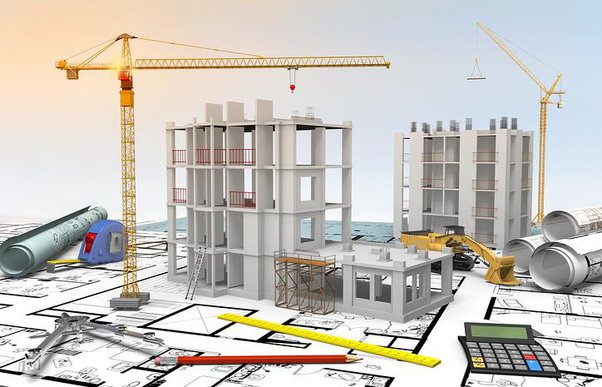Building Architecture & Construction
Building architecture and construction encompass the design, planning, and construction of buildings and structures, ranging from residential homes to commercial complexes, industrial facilities, and infrastructure projects. Here's an overview of building architecture and construction:
-
Architecture involves the design and planning of buildings, considering both aesthetic and functional aspects.
-
Architects are responsible for creating designs that meet the needs of clients while also adhering to building codes, regulations, and sustainability principles.
-
Architectural design encompasses various elements such as spatial layout, building materials, structural systems, environmental considerations, and interior design.
-
Construction involves the physical realization of architectural designs, transforming concepts into tangible structures.
-
Construction companies, contractors, and skilled tradespeople work together to execute building projects according to architectural plans and specifications.
-
Construction activities include site preparation, foundation construction, structural framing, installation of building systems (electrical, plumbing, HVAC), interior finishes, and landscaping.
-
Key Processes in Building Architecture and Construction:
-
Design Phase:Architects collaborate with clients to understand their needs and preferences, develop conceptual designs, create detailed drawings and specifications, and obtain necessary approvals.
-
Pre-construction Phase:Contractors prepare the construction site, mobilize resources, procure materials and equipment, and finalize project schedules and budgets.
-
Construction Phase:Construction teams carry out site work, structural construction, installation of building systems, interior finishes, and landscaping, while adhering to safety protocols and quality standards.
-
Post-construction Phase:Project closeout activities include final inspections, testing and commissioning of systems, completion of punch lists, turnover to the client, and documentation of project as-builts.
-
Emerging Trends and Technologies:
-
Building architecture and construction are evolving with advancements in technology and sustainable practices.
-
BIM (Building Information Modeling) is increasingly used for collaborative design and construction management, improving efficiency and coordination.
-
Sustainable design practices focus on energy efficiency, renewable materials, waste reduction, and green building certifications (LEED, BREEAM, etc.).
-
Offsite construction methods, such as modular construction and prefabrication, offer opportunities for faster, more cost-effective, and environmentally friendly building solutions.
-
Challenges and Considerations:
-
Building architecture and construction projects face challenges such as budget constraints, project delays, regulatory requirements, and stakeholder coordination.
-
Sustainability and resilience are increasingly important considerations in building design and construction, given environmental concerns and climate change impacts.
-
Safety is paramount in construction, requiring adherence to strict safety protocols, training programs, and risk management practices to protect workers and occupants.
-
Collaboration and Project Delivery Methods:
-
Collaboration between architects, engineers, contractors, and other stakeholders is essential for successful building projects.
-
Various project delivery methods are used, including traditional design-bid-build, design-build, construction management, and integrated project delivery (IPD), each offering different advantages in terms of project control, risk management, and efficiency.

